Unlike common street drugs such as marijuana or cocaine which are derived from plant-based substances, methamphetamine is a wholly synthetic drug where the cooking process is not only incredibly dangerous in itself, but also produced dangerous chemicals, biohazard waste and chemical by-products that seep into and cling onto porous items in the property.
Tens or even hundreds of thousands of them, however, are situated right under our noses in apartments and houses in every state across Australia. They are not only in inner city neighbourhoods or in rural areas, but have been discovered in otherwise normal, middle-class neighbourhoods and even in some highly affluent areas where the houses were valued at close to $1 million. These clandestine methamphetamine drug labs pose a serious public health risk, not only because they provide a local supply of drugs, but also due to the fact that the chemicals used in the production of methamphetamine are highly dangerous to human health and may even cause explosions and house fires.
The production process of methamphetamine requires a number of different other chemicals, many of which are highly volatile and toxic and which are liable to cause a fire or an explosion when handled improperly. People who live in the vicinity of meth labs are at risk of serious injury or death in the event of an accident. Unfortunately, meth labs often go undetected until the day when a crew of fire-fighters is called to the scene of an explosion or a blaze which has the potential to seriously injury or cause the death of innocent people on the area.
In addition to the risks of being injured in such a dramatic fashion, there is also the danger posed by the environmental contamination associated with the production of methamphetamine. The process of cooking methamphetamine causes persistent pollution of the immediate environment, including the carpet, the walls, the furniture, curtains, air ducts, house structure and even the air itself. This contamination can spread outside of the home and into adjacent apartments or even into neighbouring houses. Proof of how toxic meth labs can be, law enforcement officials and meth lab remediation technicians will only enter meth labs with the protection of gloves, goggles, respirators and hazmat suits, since they treat the lab as a biohazard waste site.
The effects of meth exposure and chemicals used in production include headaches, nausea, fatigue, lethargy and dizziness. More acute exposures can result in similar symptoms, as well as difficulty breathing, chest pain and cough, loss of physical coordination, and irritation and chemical burns on the skin, eyes, nose and mouth. There is also a long-term risk of cancer, liver, brain and kidney damage, miscarriage and birth defects.
If you suspect that you may be living near an active meth lab or used as a former lab it is essential that you contact the authorities and seek an expert evaluation of the environment to confirm or dismiss your suspicions.
Meth Lab Cleaners Australia technicians follow a stringent and proven process for a guaranteed successful Meth Lab remediation each and every time
We can provide professional and confidential support for clandestine meth lab and drug decontamination of domestic and commercial interiors. Contact Meth Lab Cleaners Australia today for a confidential discussion and see why Meth Lab Cleaners Australia is Australia’s meth lab decontamination and remediation experts.




